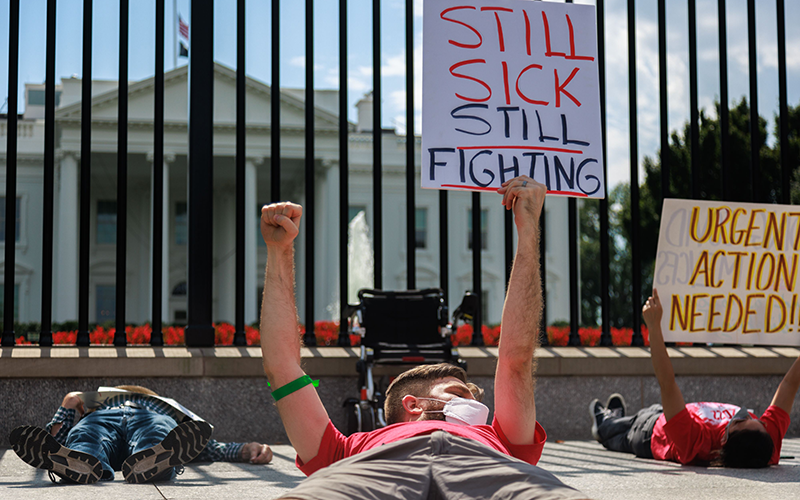LOS ANGELES – As Americans try to put COVID-19 behind them, doctors are shifting their focus to “long-haulers” – those who never fully recovered from the often-deadly disease.
To be diagnosed with long-term COVID, a patient must have tested positive in the past or after they begin feeling symptoms. Symptoms can include fatigue, nausea after physical or mental work, fever, shortness of breath, brain fog and loss of taste or smell, according to the Centers for Disease Control and Prevention.
And unlike most people sickened by COVID-19, their symptoms refuse to go away.
But diagnosing and treating it isn’t easy. Doctors are finding that patients are mistaking their symptoms for COVID-19 when in some cases, it’s other health conditions. This confusion is caused by the lack of understanding of the long-term effects of the COVID-19 virus.
“It is so difficult for primary-care doctors to have the time to spend an hour with their patients talking about all of their symptoms,” said Dr. Nisha Viswanathan, director of UCLA’s Long COVID Program. “Often when we get referrals from primary care doctors, they haven’t themselves been able to do that comprehensive deep dive.”
Doctors often discover underlying medical conditions that have flared up as a result of COVID-19, Viswanathan said during an online panel discussion Oct. 26 by California Department of Public Health’s vaccination campaign and Ethnic Media Services.
Viswanathan said her program aims to understand patients’ symptoms and correctly diagnose them so that they will receive proper treatment.
“We’ve realized that sometimes it’s a matter of really sitting down talking to the patient, understanding their medical history and determining ‘Is this actually something related to their COVID?’” Viswanathan said.
Long-term COVID symptoms are less severe and not as lethal as earlier strands of the virus. Extensive efforts are underway to understand the long-term effects and symptoms of COVID-19 because there is still much uncertainty in what causes long-term effects, said Dr. Jose Luis Perez, chief medical officer of South Central Family Centers in Los Angeles.
“It is still developing under a lot of research,” said Perez, who took part in the online discussion.
Because relatively little has been published about dealing with long-term COVID, many doctors simply don’t know what could potentially cause the symptoms.
“Is it a blood clot? Is it an abnormality in the immune system? We just don’t know,” Perez said.
Tallies of COVID-19 cases include long-term COVID. Although the numbers of COVID-19 cases are significantly lower than during the peak of the pandemic last year, Perez said that it is very likely cases are underreported because symptoms of the latest strains of the coronavirus that causes the disease are not as severe as the earlier ones.
As of Nov. 10, California had reported 10.5 million cases of COVID-19 and 99,332 deaths since the start of the pandemic in March 2020. Arizona has reported 2.3 million COVID-19 cases so far and more than 31,613 deaths.
There is no specific race, ethnicity, gender or age group that is more likely to develop long-term COVID, but experts say those who have experienced severe COVID-19 symptoms or aren’t vaccinated against the disease are the most susceptible to the effects of long-term COVID.
Because the causes of long-term COVID still aren’t fully understood, there is no cure. The best medical approach has been to deal with individual symptoms. This means repurposing medications used for other illnesses to treat long-term COVID.
For example, Perez said, doctors will recommend the use of Tylenol or ibuprofen to keep specific symptoms at bay. For neurological symptoms, such as brain fog, depression or anxiety, antidepressants have proven effective.
The panelists agreed that transparency and realistic goal-setting was the utmost important way to manage the uncertainty of long-term COVID.
“So there’s no cure” Perez said. The treatment goal becomes “Let’s just make your foggy brain less foggy. Let’s make your joint pain less painful. Let’s try to get you back in some kind of semblance of your normal life.”


